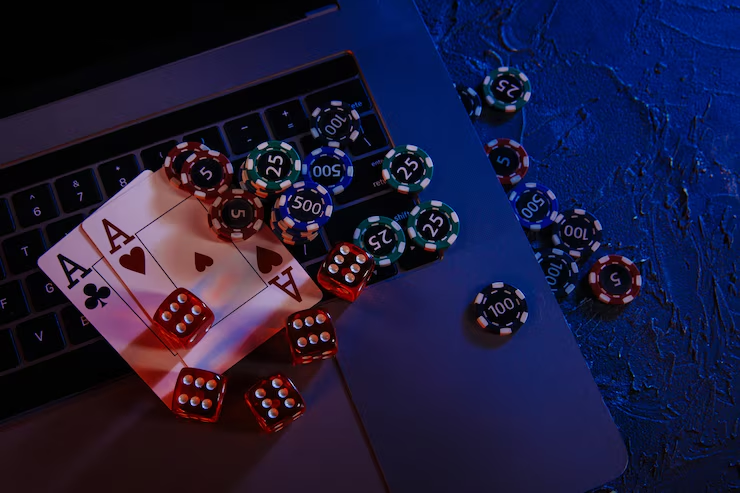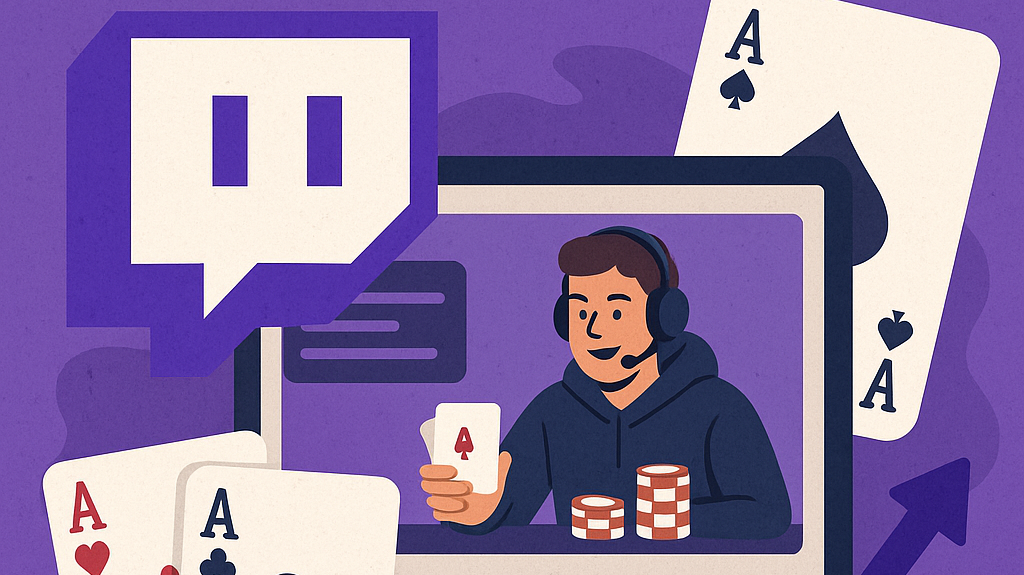A New Era of Entertainment
Not long ago, watching poker usually meant pre-recorded footage or heavily produced broadcasts from major events. That model is changing. Twitch has become a channel for live poker sessions, where everything unfolds without delay or editing. Players open a table and play while explaining their decisions, reacting in real time and responding to viewers in chat. This way of sharing the game adds a different layer—one that isn’t focused solely on outcomes but on process, personality, and interaction.
This shift has been especially noticeable in regions with active online communities. As part of what Gamblizard NO does, where the team focuses on tracking developments in online casino services across Norway, they looked at how Twitch is influencing poker’s presence in digital spaces. With consistent streams and regular viewers, poker becomes more accessible and easier to follow. Some broadcasters keep it casual with small-stakes games, while others focus on strategy or bankroll challenges.
But is this transformation or just a passing trend?
How Twitch Changed the Poker Game
Poker streaming is rapidly gaining momentum. What was a quiet, numbers-driven game is now filled with action and noise. The focus is no longer just on the cards. It’s about the person behind the screen. A new kind of poker figure has emerged—the Twitch streamer. These players don’t just shuffle chips. They speak, react, teach, and entertain. Many share their thoughts while playing. Some explain the odds. Others crack jokes or share stories with their hands.
This is what pulls in the crowd:
-
Real-time decisions. Every move plays out live. No cuts. No replays.
-
Visible emotion. Big win? You see it. Painful loss? It’s there, too.
-
Active chats. Viewers type questions, share tips, and cheer together.
The game slows down, but the energy builds. A single fold sparks debate. One bet gets hearts racing. The screen becomes a shared table, where the game never feels distant.

Driven Trends and New Stars
Twitch isn’t just boosting poker’s visibility—it’s building new careers. Many streamers started as casual players with basic setups. A web camera, a stable connection, and a clear voice were enough. Over time, they gained followers, built communities, and turned poker into full-time work.
These streamers do more than play cards. They entertain, teach, and connect. They share wins, admit mistakes, and keep the chat alive. Some stream late into the night. Others follow strict schedules. What matters is the connection they build with their audience. Viewers aren’t silent. Twitch chat helps guide the stream. People suggest hands, ask questions, request new formats, or even challenge the streamer. This feedback loop drives fresh ideas. It shapes the way content evolves in real time.
Today’s poker streams offer variety. Some focus on high-stakes drama. Others stay light and fun with small buy-ins or fast formats like Zoom and Spin & Go. Streamers adapt based on what the audience wants. Popular streamers like Lex Veldhuis, Spraggy, and tonkaaaaP are central figures in this space.
The Norwegian Scene
In Norway, poker holds a unique position. Due to tight regulations, many players went underground or online early. Twitch gave them a voice. Popular channels like "KompisPoker" or individual streamers like "Espen Uhlen Jørstad—Uhlenpoker" now pull steady audiences. They have carved out a space. While smaller than the American or UK scenes, this community is tight-knit and passionate.
Streamers often switch between Norwegian and English, creating accessibility for both locals and global fans. Norwegian poker streamers blend insight with personality. They aren’t afraid to show emotion or discuss tactics in detail. A few popular Twitch channels in Norway focus on low-stakes grinds, bankroll challenges, or late-night tournaments with commentary.
Key features of the Norwegian Twitch poker culture include:
- Bilingual broadcasts: Reaching both domestic and international viewers.
- Regulation-aware play: Norwegian streamers often explain the local rules, making their streams educational.
- Collaborations: Small channels frequently raid or host each other, boosting visibility and community feel.
Even with limited live events, Norway’s online poker scene feels alive—thanks to Twitch. It provides a space where Norwegian poker isn’t just surviving but evolving too.

Challenges and Criticism
Poker streams on Twitch come with concerns. One major issue is regulation. In some countries, streaming real-money games can cross legal boundaries, especially when underage viewers are involved. It’s not always clear where the game ends and promotion begins.
Content moderation is another challenge. Streamers often deal with toxic chat messages, spam, or people asking how to gamble—sometimes minors. There are also tools to ban users, set delays, and filter chat. But in practice, smaller channels often handle everything alone—with no dedicated moderators, keeping streams safe and within guidelines becomes harder.
Poker on Twitch has momentum, but these problems show that growth also brings responsibility.
What the Future Holds
Twitch isn’t just showing poker. It’s rewriting how the game is played, followed, and taught. By making poker public and interactive, streamers are tearing down old barriers. They’ve turned solitary sessions into shared experiences. This shift affects more than just entertainment. Viewers now study from streamers. Casual players stay for the community. Pros build personal brands. Poker’s digital age isn’t ahead—it’s already here. What’s next? Probably more hybrids: live commentary during online tournaments, viewer challenges, or AI-assisted streams. But one thing’s certain—Twitch will remain a key player. Want to see for yourself? Browse a few Twitch poker channels tonight. Watch the emotion, the tension, the chat jokes.




